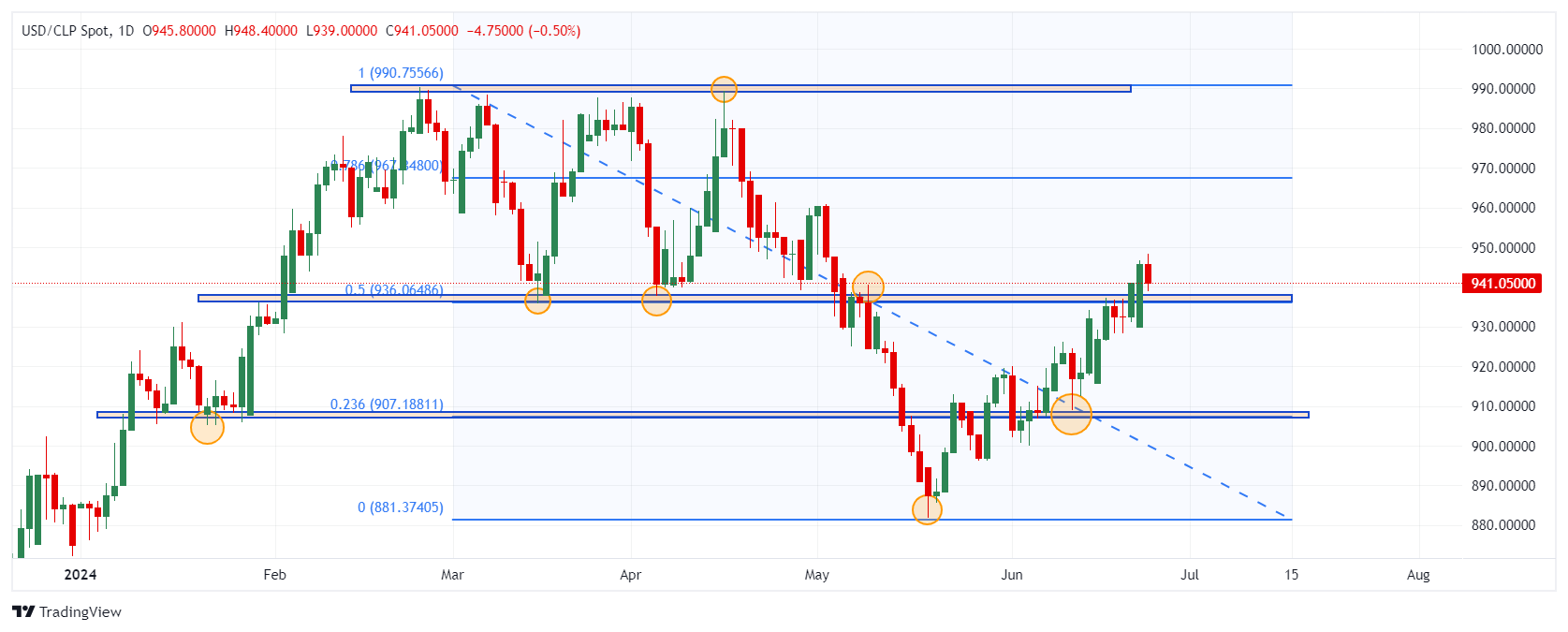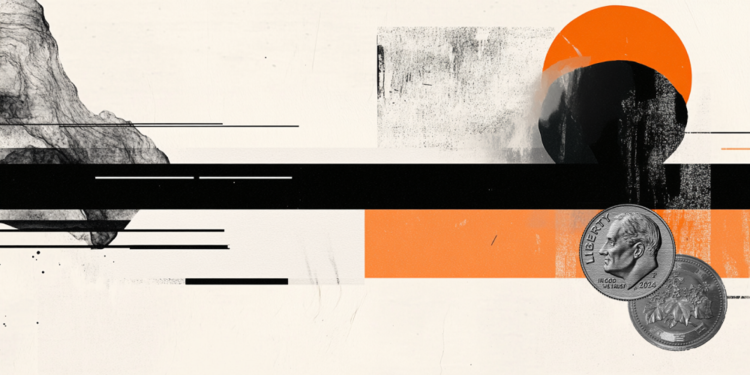- The USD/CLP presents a decline after two consecutive sessions on the rise.
- Copper breaks key support and falls to nine-and-a-half-week lows.
The USD/CLP started the European session with a high of the day at 948.40, where sellers were active and took the pair to lows of the day at 939.00. At the time of writing, the price of the US Dollar against the Chilean Peso is trading at 941.62, gaining 0.44% on the day.
Copper price hits nine-and-a-half-week lows
Copper maintains the downward trend, losing 1.07% today to reach levels not seen since April 18. The metal has broken the key support of 4.42 & holding below with the intention of visiting lower prices.
Next Friday, the National Institute of Statistics of Chile will publish Industrial Production for the month of May. This data reflects the strength of the manufacturing sector, which showed growth to 2% in April from 0.7% in March.
Technical levels in the USD/CLP
The closest support is at 936.00 in convergence with the 50% Fibonacci retracement. The next resistance is located at 960.00, the maximum of the session on May 2 that, if overcome, buyers would have their sights on 970.00, in confluence with the 78.6% Fibonacci retracement.
Chilean Peso Daily Chart

The US Dollar FAQs
The United States Dollar (USD) is the official currency of the United States of America, and the “de facto” currency of a significant number of other countries where it is in circulation alongside local banknotes. According to 2022 data, it is the most traded currency in the world, with more than 88% of all global currency exchange operations, equivalent to an average of $6.6 trillion in daily transactions. After World War II, the USD took over from the pound sterling as the world’s reserve currency.
The single most important factor influencing the value of the US Dollar is monetary policy, which is determined by the Federal Reserve (Fed). The Fed has two mandates: achieve price stability (control inflation) and promote full employment. Your main tool to achieve these two objectives is to adjust interest rates. When prices rise too quickly and inflation exceeds the 2% target set by the Fed, the Fed raises rates, which favors the price of the dollar. When Inflation falls below 2% or the unemployment rate is too high, the Fed can lower interest rates, which weighs on the Dollar.
In extreme situations, the Federal Reserve can also print more dollars and enact quantitative easing (QE). QE is the process by which the Fed substantially increases the flow of credit into a clogged financial system. This is an unconventional policy measure used when credit has dried up because banks do not lend to each other (for fear of counterparty default). It is a last resort when a simple lowering of interest rates is unlikely to achieve the necessary result. It was the Fed’s weapon of choice to combat the credit crunch that occurred during the Great Financial Crisis of 2008. It involves the Fed printing more dollars and using them to buy US government bonds, primarily from financial institutions. QE usually leads to a weakening of the US Dollar.
Quantitative tightening (QT) is the reverse process by which the Federal Reserve stops purchasing bonds from financial institutions and does not reinvest the principal of maturing portfolio securities in new purchases. It is usually positive for the US dollar.
Source: Fx Street
I am Joshua Winder, a senior-level journalist and editor at World Stock Market. I specialize in covering news related to the stock market and economic trends. With more than 8 years of experience in this field, I have become an expert in financial reporting.







